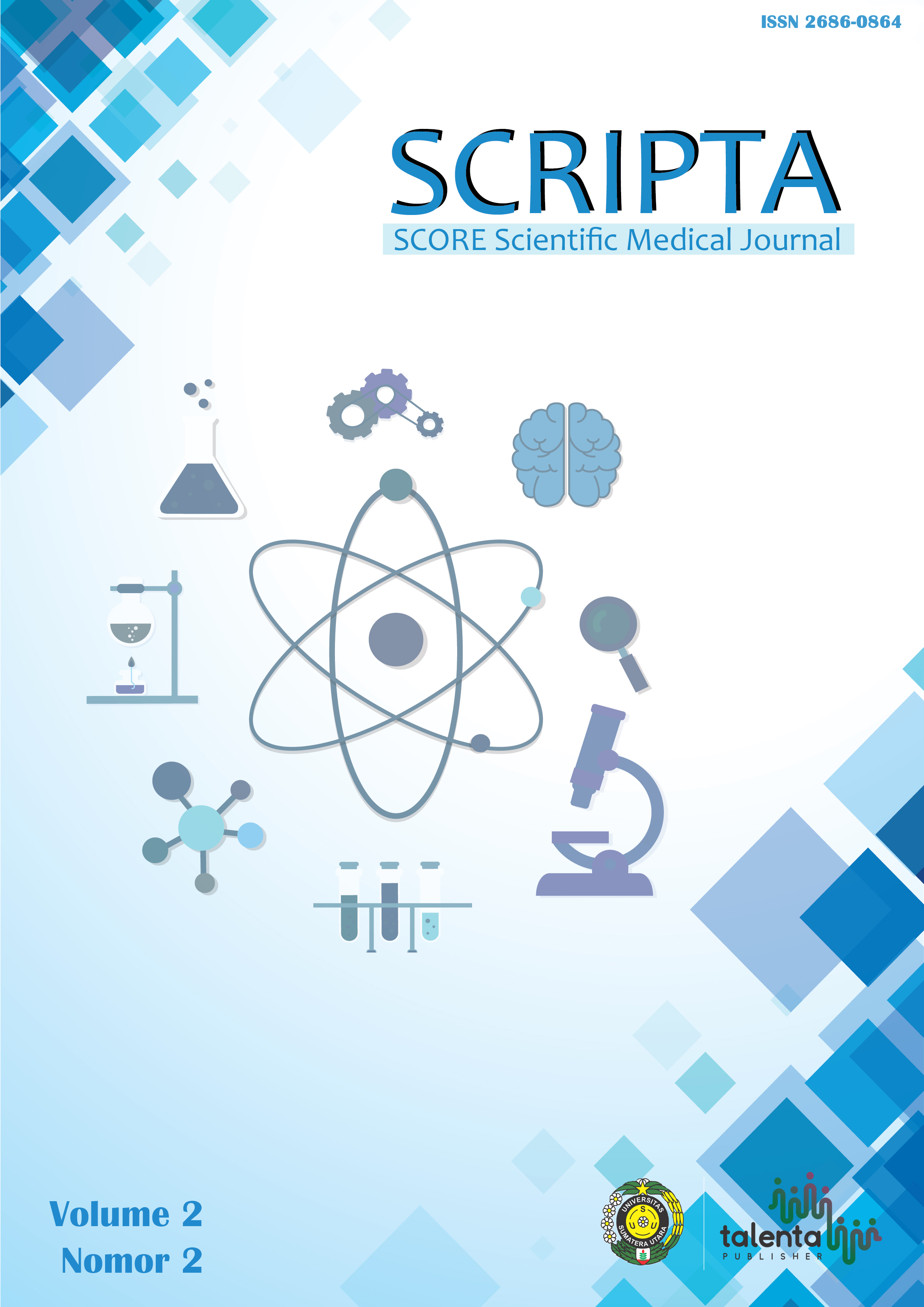The Potential of eCD4-Ig, Delivered by Adeno-Associated Virus (AAV) Vector as a Novel Vaccine for HIV/AIDS Infection
DOI:
https://doi.org/10.32734/scripta.v2i2.3922Keywords:
AAV, AIDS, eCD4-IgG, HIV, vaccine, vaksinAbstract
Background: HIV/AIDS has already become one of the world's major health issues taking its toll on millions of lives each year. Developing an HIV vaccine with excellent efficacy has become a global urgency that must be addressed immediately. Recently, researchers have successfully developed a more self-like molecule which is a fusion protein between human CD4 domains and immunoglobulin G (IgG) Fc with a CCR5-mimetic sulfopeptide in the carboxy terminus. This molecule, eCD4-Ig, targets only the conserved regions of HIV Env and thus demonstrated the most remarkable potency and breadth so far. By using adeno-associated virus (AAV) vector, eCD4-Ig’s long-term expression in vivo can be achieved.
Objectives: Evaluate the efficacy of AAV-eCD4-Ig as both preventive and therapeutic vaccine for HIV/AIDS infection.
Methods: A systematic literature study was conducted with the database in PubMed, ScienceDirect, and Proquest. No time and language restriction were applied.
Discussion: This review shows that eCD4-Ig eliminates HIV-infected cells through neutralization and antibody-dependent cell-mediated cytotoxicity (ADCC). Moreover, eCD4-Ig is also capable of preventing HIV infection in vivo. Delivered with AAV, eCD4-Ig is maintained stably at both protective and therapeutic levels, as well as gives robust protection for rhesus macaques for almost a year long through a single injection.
Conclusion: This study offers evidences that AAV-eCD4-Ig appears to have the potential to be an effective vaccine to prevent HIV infection.
Keywords: AAV, AIDS, eCD4-Ig, HIV, vaccine
Â
Latar Belakang: Pengembangan vaksin HIV yang efektif menjadi sangat penting mengingat tingginya angka kematian yang ditimbulkan oleh HIV/AIDS. Beberapa tahun terakhir, peneliti berhasil menemukan sebuah molekul yang tersusun atas domain CD4 manusia, immunoglobulin G (IgG) Fc, dan sulfopeptida yang menyerupai CCR5. Molekul yang dinamakan eCD4-Ig ini menargetkan area konservatif dari HIV Env sehingga berpotensi untuk menjadi vaksin HIV yang efektif. Ekspresi eCD4-Ig akan dipertahankan menggunakan Adeno-associated Virus Vector (AAV).
Tujuan: Evaluasi efektivitas AAV-eCD4-Ig sebagai vaksin untuk HIV/AIDS.
Metode: Penelitian dilakukan dengan melakukan tinjauan pustaka dari beberapa database jurnal, yakni PubMed, ScienceDirect, dan Proquest tanpa ada batasan waktu dan bahasa.
Pembahasan: eCD4-Ig membunuh sel-sel yang terinfeksi HIV melalui proses netralisasi dan antibody-dependent cell-mediated cytotoxicity (ADCC). eCD4-Ig juga memberikan perlindungan terhadap infeksi HIV. Ekspresi AAV-eCD4-Ig sangat stabil untuk dosis protektif dan terapeutik, sekaligus melindungi rhesus macaques dari infeksi HIV selama hampir 1 tahun lamanya hanya dengan sekali injeksi.
Kesimpulan: AAV-eCD4-Ig memiliki potensi yang menjanjikan untuk menjadi vaksin HIV yang efektif bagi seluruh penderita HIV/AIDS di seluruh dunia.
Kata Kunci: AAV, AIDS, eCD4-Ig, HIV, vaksin
Downloads
Downloads
Published
How to Cite
Issue
Section
License
Copyright (c) 2021 Ghea Mangkuliguna

This work is licensed under a Creative Commons Attribution-ShareAlike 4.0 International License.
Authors who publish with SCRIPTA SCORE Scientific Medical Journal agree to the following terms:
- Authors retain copyright and grant SCRIPTA SCORE Scientific Medical Journal right of first publication with the work simultaneously licensed under a Creative Commons Attribution-NonCommercial License that allows others to remix, adapt, build upon the work non-commercially with an acknowledgment of the work’s authorship and initial publication in SCRIPTA SCORE Scientific Medical Journal.
- Authors are permitted to copy and redistribute the journal's published version of the work non-commercially (e.g., post it to an institutional repository or publish it in a book), with an acknowledgment of its initial publication in SCRIPTA SCORE Scientific Medical Journal.














